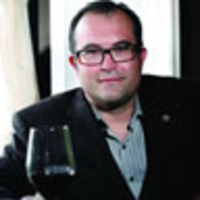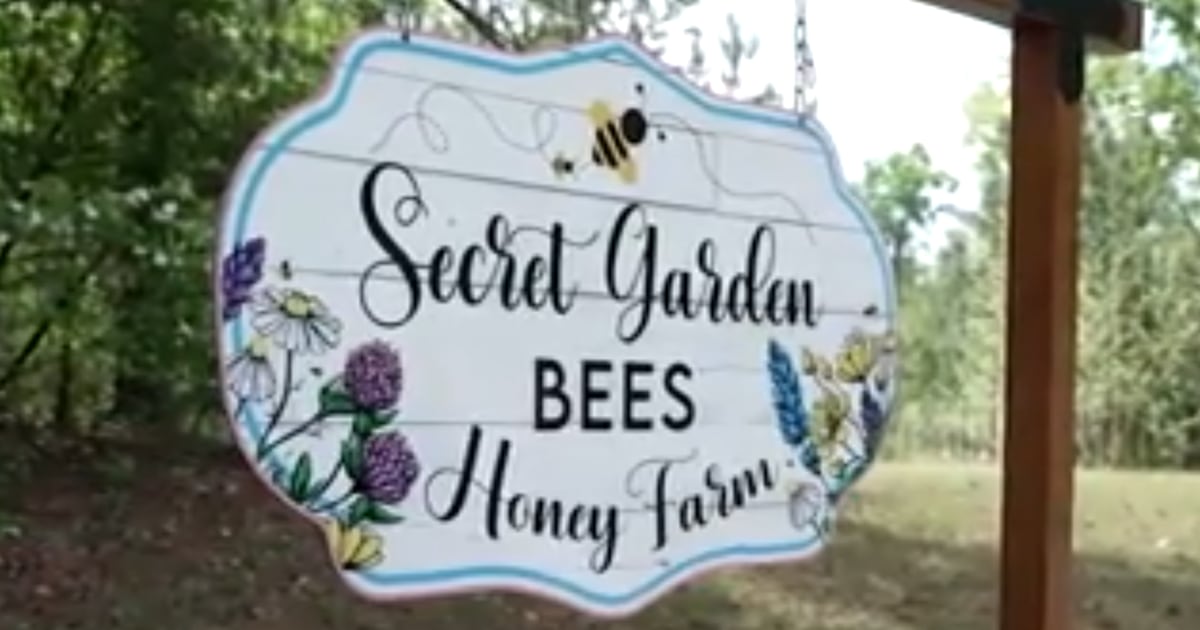
Most wine bought in the United States cost less than $10 a bottle. Of that price, the winery makes less than $2. A large chunk of that goes to pay for the glass, the labels, and the corks. Another chunk goes to paying for the winery staff, another goes toward taxes... you get the idea. To make any sort of profit, the winemaker has to buy low-quality grapes in bulk and mass-produce the stuff.
Since only a tiny amount is needed to fix an entire barrel, Mega Purple is probably being added to over 25 million bottles of wine annually.
Wine from mass-produced bulk grapes is going to be a tad nasty. More often than not, it will taste harsh and vegetal; possibly like a dead squirrel dipped in kerosene. This is where modern winemaking comes into play. There is a standard toolbox of secret winemaking techniques to shape up such craptacular vino.
Trick No. 1 is something called Mega Purple. Not figuratively—literally. Produced by the same company that gave us Manischewitz, Mega Purple is a grape concentrate that adds fruit and color to red wine. You’ve surely consumed it. Winemakers use an estimated 10,000 gallons of the stuff every year—because only a tiny amount is needed to fix an entire barrel, Mega Purple is probably being added to over 25 million bottles of wine annually. A former winemaker at Yellowtail and several distributors tell me that the wildly popular Australian label, among others, uses it. (A member of the Yellowtail production team did not immediately return an email asking for comment.)
Besides the look, Mega Purple smoothes out the flavors, and give it a fruity wallop. It will also hide unwanted vegetal flavors and even mask certain types of spoilage. It’s not just the low-end wines that utilize this nifty little cheat. I’ve been told—as a rule, wine folk are rather gossipy and catty—that this technique is being used heavily on wines from California and Australia that retail for upward of $20, and even the occasional ultra-premium wines. A former winemaker from California’s Central Coast tells me that "it’s used extensively around here. It pumps up a jammy quality and hides green flavors, especially in Cabernet."
A winery does not have to purchase the grape concentrate to initiate this coverup. Any winery that possesses a reverse-osmosis machine—usually used to remove alcohol from wine—can create their own concentrates. Many of the ultra-premium wineries and chateaus across the world possess this machine. Are some using it to occasionally pump up their wines artificially? It’s like asking whether some suddenly large baseball players seem to be hitting more home runs than expected.
Another way to hide flaws is to increase the alcohol content, which can easily be done by adding sugar to the grape juice prior to fermentation. This is a traditional style of manipulation called chaptalization, and gives the wine a rich mouthfeel. It's legal in many places, and even some of the best Bordeaux chateaus were chaptalizing their wines well into the 1990s. It is also done illegally, as was the case in 2006: Sixty French wineries were implicated in a police investigation that allegedly uncovered 10 years of illegal chaptalization in the Beaujolais wine region.
Another common trick is to flavor inexpensive wines with oak chips or staves. Wine drinkers are accustomed to the taste of oak in wine, and often seek it out. However, aging wine in oak barrels is quite expensive, adding at least $1 to the cost of every bottle of wine. That would eat up the winery's profit for any bottle that retails for less than $12 a bottle. Instead, they store the wine in large stainless-steel vats and add bags of toasted oak chips, to give it a nice cinnamon flavor. Pessagno Winery in Monterey uses oak staves and chips in almost all of its wines, most of which retail for more than $30 a bottle, and they’re not alone at the high end—just the only one that’s honest enough to admit it.
Winemakers will also pump up or tone down the organic material in wine. Is that Cabernet not tannic enough? Add some powdered tannin. Is it too tannic? Fine it with isinglass. Is the Chardonnay not tart enough? Pump it up with some tartaric acid. Is it too tart? Initiate malolactic fermentation. Want to unlock flavors of rose petals? There are at least 20 strains of cultured yeast that will do that for you. You just have to choose which one you want. Want a deeper color for your Pinot Noir? There are a dozen enzymes for that, too.
Creating deliciousness from the raw ingredients of nature is the calling of the winemaker. You cannot fault him for using every tool in the toolbox to make the best possible wine. However, the race to gain popularity with the wine-drinking public and higher ratings from Wine Spectator and the Wine Advocate has forced winemakers from around the world to all use the same set of tools. This road ends at a paradox: Never have there been so many good-tasting wines, and never have so many of them tasted so much alike.
Sometimes wineries go too far in their quest to make the best wine possible, and end up doing something patently illegal. In 2004, winemakers at the KWV winery in South Africa were caught adding vegetable flavorings to several of their Sauvignon Blancs. The idea was to give them varietally correct aromas of green pepper and grass. They were successful: The wines racked up several awards before the fraud was discovered.
A few years earlier, the Australian winery Kingston Estate was caught exporting wine containing trace amounts of the silver nitrate, a toxic salt. It was added in minute quantities to hide a sulfurous rotten-egg smell in the wine. Several shipments made their way to the United States, but were caught and impounded.
In both of these examples, the winery was attempting to manipulate the wine's aroma to make it more marketable. However, some devious businessmen decide to add something really nasty to their wines. In 1985, several wine brokers in Austria were caught adding diethylene glycol to their wine in an attempt to give inexpensive wine a richer and sweeter flavor. This solvent is sometimes used as brake fluid in automobiles. The amounts added were well below the toxic threshold, but destroyed the reputation of the entire Austrian wine industry for over a decade.
A much worse incident occurred the following year, when a winemaker in southern Italy blended methanol into his wine, to bump up the alcohol content. Twenty-three Italians died and dozens more were hospitalized, some permanently blinded by alcohol poisoning. The case is still working its way through the Italian court system.
Last year, L'Espresso newspaper of Rome reported that 20 Italian companies were under investigation for selling wine that contained manure, fertilizer, and hydrochloric acid. The paper went on to claim that more than 180 million gallons of the wine were sold within Italy. Italian and European Union authorities have downplayed the report, citing that none of the wine was destined for export and that there was no threat to public safety.
This article probably freaked out every wine lover reading this. Sorry about that, but such a great and noble beverage deserves a good clean dosage of honesty. If you want to stay away from overly manipulated wine, you may have to change your buying habits. First of all, keep your hands out of the bargain bins: Those bottles are there for a reason. Also, start buying more European wines. Despite the few horror stories I gave you, the Europeans have much stricter regulations on wine additives than the U.S. or Australia. Lastly, don't worry too much. If you like it, give a toast to Mega Purple and enjoy it.
Plus: Check out Hungry Beast, for more news on the latest restaurants, hot chefs, and tasty recipes.
Keith Wallace is the founder of the Wine School of Philadelphia.






